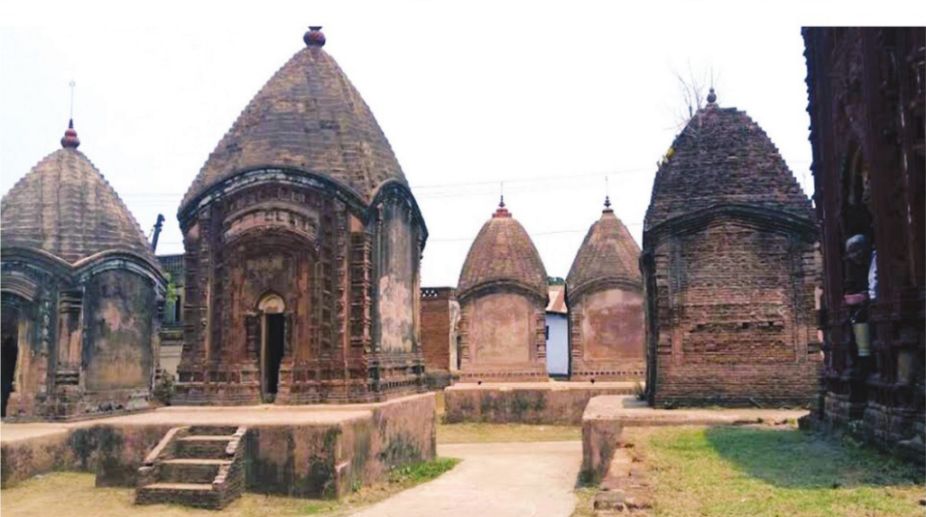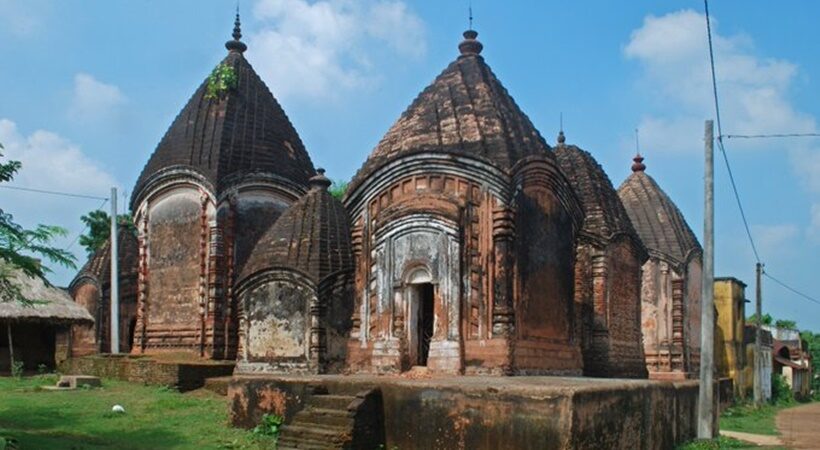Situated in Jharkhand’s deep hinterland, the village of Maluti has magnificent spaces that bear testimony to more than 300 years of rich temple architecture. Once home to 108 temples, the village is now but a poor shadow of its past, with only 72 shrines remaining. However, the sheer number puts Maluti on the heritage map of India. With intricate terracotta carvings of mythical scenes on their façades and walls, which have survived harsh weather and the ravages of time since the early 17th century, Maluti’s terracotta temples are now being restored. The temples, mostly of Shiva, are dotted in five different clusters — Sikir Taraf, Rajar Bari, Madhya Bari, Chhoi Taraf and the Mauliksha temple complex.
Situated in the Dumka district, the village is close to West Bengal, and Chala architecture, inspired by traditional Bengali huts with their sloping roofs having curved edges, is a distinct feature of Maluti’s temples. Also, the influence of the exquisite Keshta Raya terracotta temple at Bishnupur in Bengal’s Bankura district is very much evident in every temple.
There are multiple historical narratives when it comes to the origin of the temples at Maluti. According to one expert, in the early 16th century, Sultan Alauddin Hussain Shah of Gauda awarded a zamindari to one Basanta Roy, a Brahmin of Katigram village, as a reward for catching the pet hawk, or baj belonging to the Sultan’s wife. Roy, who came to be known as Raja Baj Basanta, founded a dynasty that had its capital at Damra (some 8 km to the south). Later, it was shifted to Maluti. And instead of constructing palaces, this king’s successors in their quest for prestige built more and more temples on auspicious occasions.

According to another interpretation, it was the clash of egos between the women of the zamindar family the reason behind the construction of so many temples in such a small village. Local legends have it, the women would take offence if they had to visit a temple built by another woman’s husband. Most of these temples are dedicated to women, indicating that temple building had become a status symbol.
It is believed that the temples were built in the early 17th century. However, with the decline of the traditional ruling classes and other factors, the temples started to crumble due to the lack of maintenance. Some of the terracotta temples have been overrun by vegetation whereas others have become the targets of looters. The Bihar government did repair the temples in 1985-86, but there has been no sustained maintenance in the absence of trained local manpower to handle conservation regularly. However, with the inclusion of the temples on Jharkhand’s tableau as a part of the Republic Day parade, renewed restorations efforts have begun.



















